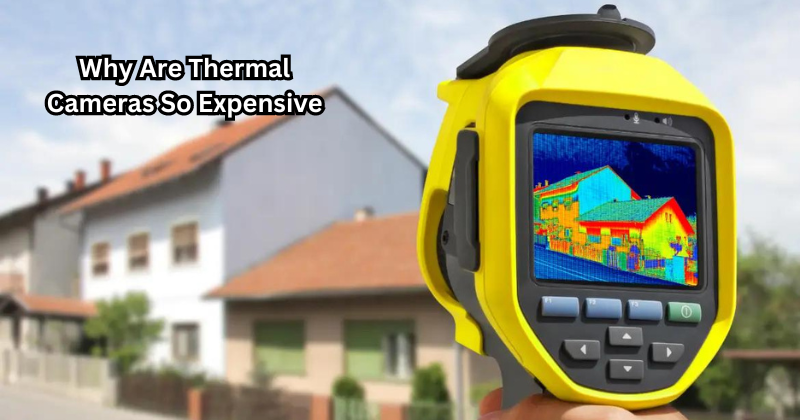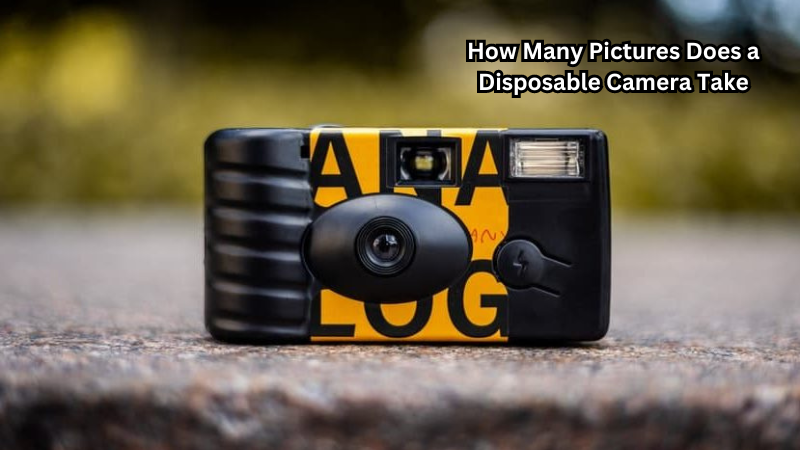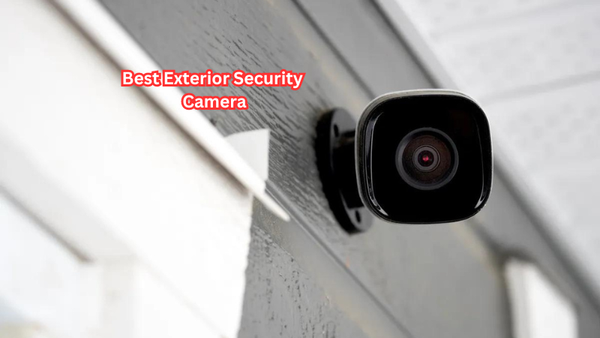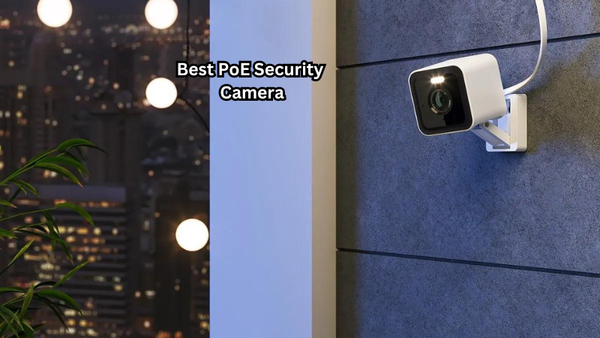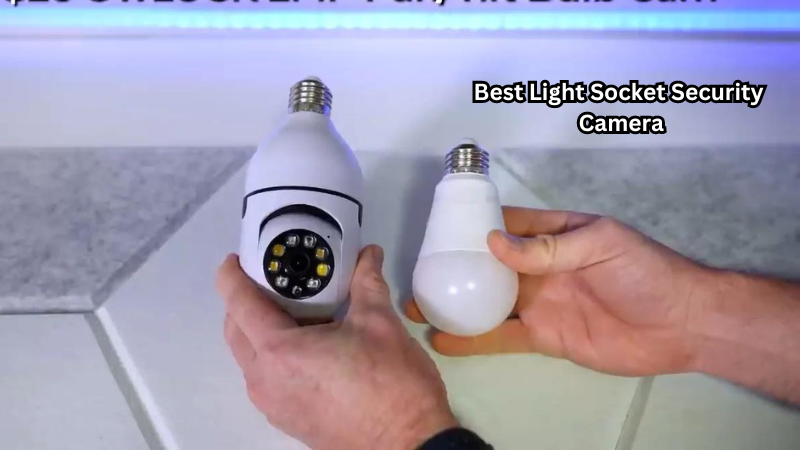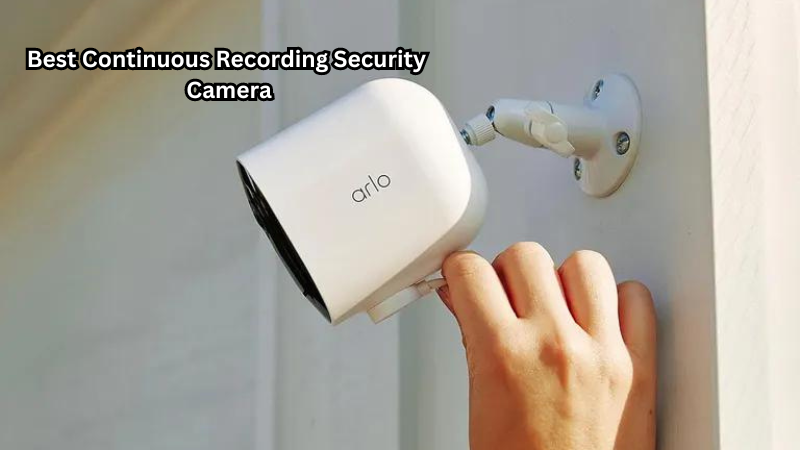The allure of thermal cameras lies in their ability to capture infrared radiation emitted by objects and translate it into visible images, making them invaluable for various industries like security, maintenance, and healthcare. However, why thermal cameras are so expensive often looms large.
The high cost can be attributed to the complex technology of detecting and interpreting heat signatures, the specialized components required for accurate thermal imaging, and the rigorous calibration and testing processes necessary to ensure precision.
Understanding the intricacies behind thermal camera production sheds light on their price point and emphasizes their unparalleled utility in diverse professional settings.
What is Thermal Cameras & Its Radiation Technology
Thermal cameras use radiation technology to capture images and measure temperature differences. Unlike traditional cameras, which rely on visible light for imaging, thermal cameras detect and translate infrared light radiation emitted by objects in the form of heat signatures. Visible light cameras cannot detect infrared radiation, making them ineffective for capturing heat signatures and temperature variances.
This is made possible through thermography, where specialized microbolometers convert temperature variations into electric signals. Sophisticated software algorithms then process and translate these signals into visible images.
The result accurately represents heat patterns and temperatures as a color-coded image, allowing for quick identification of potential issues or anomalies.
How Thermal Camera Works
Thermal cameras use specialized sensors called microbolometers to detect and measure temperature differences. These sensors are composed of small grids of pixels, each with a tiny thermometer that can accurately read heat levels.
When an object emits infrared radiation, it enters the camera's lens and is focused on the sensor grid. The thermometers on each pixel then record the heat they receive, creating a temperature map of the object in view. Infrared cameras can capture temperature variances with high accuracy, typically within 0.1 to 0.5 degrees Celsius.
Software algorithms then process this data to visually represent the object's heat signature, which appears in different colors depending on its temperature range. This process happens at a rapid rate, allowing for real-time thermal imaging.
Why Thermal Cameras Are Expensive
Now, let's delve deeper into the factors contributing to the high thermal camera cost.
The Cost of Specialized Components:
One reason for the high cost of thermal cameras is the use of specialized components that are not found in traditional cameras.
Microbolometers, as mentioned before, are essential in converting infrared radiation into electrical signals. These sensors require highly sensitive and specialized materials like vanadium oxide or amorphous silicon to function effectively.
The manufacturing process for these microbolometers also involves intricate techniques such as photolithography, where patterns are etched onto a substrate using light-sensitive polymers. This expensive process contributes to the overall cost of thermal cameras.
Other components like lenses, detectors, and complex electronic circuits used in thermal camera production also add to the cost.
Advanced Sensor Technology:
Infrared Detectors: Another contributor to the high cost of thermal cameras is the type of infrared detector used. There are various types of detectors, such as cooled and uncooled, each with its benefits and drawbacks.
Cooled detectors, which offer higher sensitivity and resolution, require cryogenic cooling systems that use liquid nitrogen or helium to maintain low temperatures. This adds significant costs to the camera's overall price. A thermal sensor with a cooled detector can cost up to $10,000, while an uncooled detector may only cost around $1,000.
Imaging Sensor: The imaging sensor in a thermal camera is responsible for capturing the heat signatures and converting them into electrical signals. These sensors must have a wide temperature range, high-resolution capabilities, and fast response times for accurate thermal imaging.
As a result, they are more expensive than traditional camera sensors. Thermal imaging sensors also require specialized processing and calibration, contributing to the overall cost.
Specialized Optics:
The lens of a thermal camera is designed to focus thermal radiation onto the sensor grid and must be able to transmit this radiation without distortion. This requires specialized materials like germanium, which are costly and often custom-made for thermal cameras.
Thermal imager lenses also have different coatings and designs than traditional camera lenses, further contributing to their higher cost. The circuit board for thermal imagers also requires specialized materials and designs to prevent heat interference, adding to the overall cost.
Calibration and Quality Control:
Thermal cameras require rigorous calibration and testing processes to ensure accurate temperature readings. This involves adjusting the sensors, electronics, and optics to specific tolerances and standards.
Low Volume Production:
Thermal cameras are not mass-produced like traditional cameras, as they require specialized components and advanced technology. This means that the production volume is lower, resulting in higher costs per unit.
These procedures are time-consuming and expensive, as they must be done in a controlled environment with highly precise equipment. Moreover, thermal cameras often undergo frequent quality control checks throughout production to maintain their accuracy and performance.
The Benefits of Thermal Imaging Cameras
Despite the high cost, thermal cameras offer unparalleled utility in various industries and applications.
Some of the benefits include:
- Non-contact Temperature Measurement: Thermal cameras allow for non-contact temperature measurement, eliminating the need for physical contact with potentially hazardous objects or environments.
- Versatile Usage: Thermal cameras have numerous applications, from identifying energy inefficiencies in buildings to detecting heat signatures of machinery for maintenance and safety purposes.
- Enhanced Safety: In industries like firefighting and law enforcement, thermal cameras can be used to navigate through smoke or darkness and identify potential hazards quickly.
- Cost Savings: By identifying issues that may not be visible to the naked eye, thermal cameras can help save costs by preventing damage and downtime in machinery and infrastructure.
- Early Detection: Thermal cameras can detect changes in temperature before they become critical issues, allowing for early intervention and prevention of accidents or failures.
Thermal technology continues to advance, with improvements in resolution, sensitivity, and affordability, making thermal cameras more accessible to different industries.
What Are Thermal Imaging Devices Used for
Thermal images are generally used in many different applications. The thermal camera can be used for outdoor hunting and allows easy identification and follow of wildlife even in dense vegetation or harsh weather conditions. In the military, thermal cameras are used for surveillance and reconnaissance purposes. Other common applications of thermal imaging technology include:
- Building Inspections: Thermal cameras can detect heat loss in buildings, identify structural issues, and locate missing insulation.
- Industrial Processes: Thermal imaging cameras are used in various industries to monitor process temperatures, identify machinery malfunctions, and prevent equipment downtime.
- Electrical Maintenance: By detecting anomalies like hotspots or loose connections, thermal cameras can help prevent electrical fires and ensure the safe operation of electrical systems.
- Medical Applications: Thermography can be used in medical fields to detect diseases by identifying temperature changes in the body.
- Environmental Monitoring: Thermal cameras can be used to track changes in temperature and identify potential environmental issues like fires or oil spills.
- Search and Rescue: In emergency situations, thermal cameras can help locate missing individuals by detecting their heat signatures.
Thermal devices have proven to be valuable tools in various industries, providing crucial information and improving safety and efficiency. As technology continues to advance, the potential applications for thermal cameras will only continue to expand.
FAQs
Is a thermal camera worth it?
A thermal camera can be worth the investment for industries that require accurate temperature detection and monitoring, such as building inspections, industrial processes, and electrical maintenance. However, it may not be necessary or cost-effective for personal use.
Is there a difference between a thermal camera and a regular camera?
Yes, traditional cameras capture visible light, while thermal cameras capture infrared radiation. This allows thermal cameras to measure temperature differences rather than color or light. Additionally, thermal cameras require specialized components and technology, adding to their overall cost.
What are the disadvantages of thermal imaging cameras?
Some disadvantages of thermal cameras include their high cost, the need for regular calibration and testing, and lower production volume. Additionally, thermal images may not provide as much detail as traditional images and may be affected by weather conditions.
Can thermal cameras see through walls?
No, thermal cameras cannot see through walls. They can detect heat signatures on or near the surface of a wall but cannot penetrate solid objects. In order to accurately measure temperatures behind an object like a wall, you would need to use a thermal camera with high sensitivity and a wide temperature range.
Conclusion
In essence, the steep price tag attached to thermal cameras reflects the sophisticated engineering, advanced capabilities, and meticulous quality standards intrinsic to their design and production. While the cost may present a barrier for some, it underscores the precision, reliability, and innovation embedded within these cutting-edge devices.
As technology continues to evolve and applications for thermal imaging expand, the investment in high-quality thermal cameras proves to be a strategic decision for industries seeking superior performance, enhanced safety measures, and unparalleled insights into the invisible world of heat signatures.
